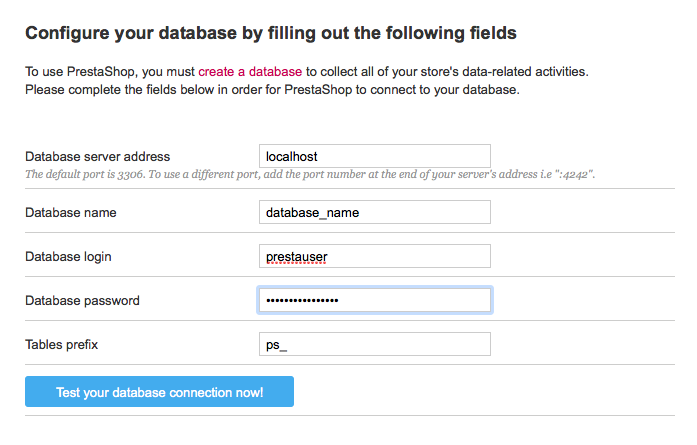Installing PrestaShop [version 1.7.4.4+]
![]() PrestaShop is a free, PHP-based shopping cart software.
PrestaShop is a free, PHP-based shopping cart software.
NOTE: You can install PrestaShop on your account with a few clicks via the App Installer section of the Control Panel. You can check our App Installer article for more information.
If you prefer to install PrestaShop manually, you can follow the instructions listed in this article.
To install PrestaShop, please follow these steps:
1. Download the installation from the site of the vendor. PrestaShop can be obtained from:
http://www.prestashop.com
2. Once you've downloaded the archive that contains the installation, you need to upload it to your disk space.
You can either extract all the files from the downloaded archive and upload them, or you can upload the archive and use the web hosting Control Panel's File Manager to extract the package. Please note that the installation files are usually placed in a subdirectory, so after extraction you may need to move them to the directory you've designated for the PrestaShop application. The File Manager lets you select multiple files and folders to move to any location on your account.
The best way to upload big files or multiple files is via FTP. If you are not sure how to upload the files, please check the Uploading files section from our online documentation.
If you are installing the application directly in your main domain or in a subdomain, you may need to delete the default index.php file first. You can do this either via FTP or through your web hosting Control Panel's File Manager.
3. Create a new MySQL database and user for the PrestaShop application. For security reasons, MySQL databases and users can be created only through the hosting Control Panel. Detailed instructions on the process are available in our Creating a MySQL database/user article.
Once you have the database and MySQL user created, you should associate the MySQL user with the database by following the instructions from our Associating a MySQL user with a database article. Unless you have a reason to do otherwise, you can select all available privileges for the new MySQL user.
4. You need to access with your browser the directory in which the extracted PrestaShop files are located.
5. On the first step select the installation language and click Next. On the next page, read and agree to the license information of PrestaShop by selecting the I agree to the above terms and conditions option.
Click the Next button.
6. On the next page PrestaShop will check whether the hosting server meets the installation requirements. You can disregard the warning about enabling a PHP accelerator. You can disable the short_open_tag PHP setting by adding the following line to a PHP configuration file (php.ini) in your hosting account:
short_open_tag = off
You can learn more on how to change various PHP settings in our Changing PHP Settings article.
Click the Next button.
7. On the next step you have to configure your e-shop. No server-related settings are required. Click the Next button once you've filled out the form.
8. You will need to enter your database information. Please specify the following settings:
Database server address: You need to enter localhost for MySQL 5 or 127.0.0.1:3308 for MySQL 8.
Database name: You need to specify the MySQL database you created for your PrestaShop application.
Database login: You need to enter the MySQL username you created at your web hosting Control Panel's MySQL Databases section for your PrestaShop application.
Database password: You need to enter the password you assigned to your MySQL user.
Tables prefix: You do not need to modify this setting, unless you are installing more than one copy of PrestaShop using the same database.
Click the Test your database connection now! button to make sure that the entered settings are correct. If they are, you will see a Database is connected message. Click the Next button.
9. Once the software is installed, you can click the Discover your store button to see how your e-shop looks, and if you click the Manage your store button, you will access its administrative panel. Before using these buttons, go to the File Manager section in the hosting Control Panel, navigate to the directory where PrestaShop is installed, and delete the directory named install. For security reasons, it is also recommended to rename the admin directory. Important: Please note that once you rename the admin directory the URL to the administrative panel of PrestaShop will also change.
PrestaShop is now installed and ready for use.
IMPORTANT: You should monitor the site of the software vendor for any security updates of your installed application.